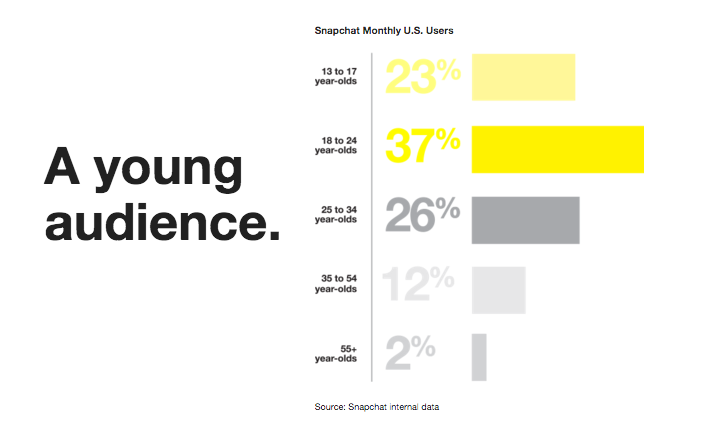Whether you’re a fan or not, there’s no denying that social media is at the forefront of the modern world: for example, Facebook alone now has over 1.7 billion global users (a truly mind-boggling statistic!).
For millennials – many of whom are university students – the use of Facebook, Twitter, Instagram et al. is as familiar as breathing. Yet many academics are reluctant to embrace the trend, viewing social media as a frivolity rather than an aid to learning.
At Crowdfund Campus, we firmly believe that social media is a powerful tool for student engagement, and this blog aims to show you why. So, what are you waiting for? Energise your English class; brighten up biology; or mix it up in maths by testing out these savvy social media techniques:
1. Take on Twitter
The short, pithy messages for which Twitter is known may not seem an obvious fit for higher education, but it can be a useful resource. It’s a great way to reach students who are keen social media users or who may not feel confident enough to speak out in the classroom. You can tweet links to materials and lecture recordings before and after class; disclose the handles of guest speakers and encourage students to pose questions prior to the session; and even live-tweet during lectures. Create a snappy hashtag for your course before it commences and tag each relevant tweet, and you’ll soon build up a valuable online learning resource that is both accessible and engaging.
Don’t assume that all students will be Twitter-savvy, however; though many students will be familiar with social media, using social media in an educational context may be completely new to them (which makes this technique all the more powerful when conducted correctly). Mature students may need some guidance, too. Provide some training at the start of the course – outlining how you intend to use social media and what to look out for, with suggestions of how they might interact in order to get the most out of the exercise – and you’ll also be providing your students with another vital skill: an insight into how to use social media strategically.
2. Spark interest with Snapchat
Snapchat, the photo and video messaging app, is another tool that may not seem an obvious choice for university lecturers – but which could have real benefits. Boasting over 100 million users, nearly 80% of which are college students, it can create a sense of immediacy and vitality within the classroom and on campus itself. Lecturer Beryl Jones has seen great success when utilising the app to stimulate students in the large lecture halls of Kingston University; indeed, the results have been far beyond that which she expected. She comments: “It’s meant the students are more actively engaged. What I hadn’t envisaged was them taking screenshots of my slides while in the lecture hall and annotating them before sending to me. They used this to address things they didn’t understand, as well as answering the questions I posed.”
Another interesting Snapchat feature is the ‘Geofilter’ element, which allows branded overlays to be added onto the video. Anyone can add the overlay, provided they’re within a certain radius – meaning that university branding (such as ‘University of Oxford’) can be applied by all Snapchat users. This is a powerful tool, for several reasons. First of all, it creates a sense of shared community culture, particularly if the faculty themselves use this feature and encourage students to do so; it allows ‘real’ images of campus life to be easily accessible, and provides an opportunity to see life at university from different perspectives (within the lecture hall; from the dorms; from a teacher’s office, for example); finally, it means that prospective students need only click on the name (i.e. ‘University of Oxford’) and they’ll view a collage of all Snapchats that have applied that particular Geofilter. A great enhancement to campus culture and student recruitment processes!
3. Inspire instant collaboration with Google Docs
Online resources like Google Docs are not social media platforms in the strictest sense; however, they incorporate a real-time, social element that gives them the potential to be extremely useful within the classroom. The tracked editing and comments features allow students to collaborate with ease, provide instant feedback, and work in groups in their own time. It reduces the need for formal seminars and – by removing the watchful eye of the lecturer – fosters a sense of teamwork, openness and enhanced responsibility.
Such platforms are also increasingly important in the world of employment – due to the need to support remote working and international collaboration – and as such this technique offers valuable training for the workplace.
Final thought: listen and learn!
A 2015 report by Ofcom found that teenagers spend three and a half working days each week on social platforms. It seems obvious, therefore, that prospective students (and indeed alumni) will evaluate the value of a university – and the student journey – via social media. As such, the importance of social media as not only an engagement but also a research tool cannot be understated. The University of Cambridge, for example, reportedly manage hundreds of different social accounts, separately targeting a range of audiences from PhD students to affiliated organisations, in order to keep up to date with the varying needs of their community. As Head of Digital Communications, Barney Brown, explains, their focus is on: ‘asking questions, and gauging audience responses to different types of content.’
Social media provides a unique opportunity to see and be seen – embrace it!
The Crowdfund Campus team fully support the use of interactive, challenging means – like our Sandpit Tool – to stimulate students. Please don’t hesitate to contact us to learn more; we’d be delighted to work with you.






Leave a Reply